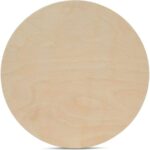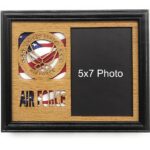I. Understanding the Re-Manufacturing Revolution: An Overview of Industrial Waste Transformation
II. The Fusion of Art and Sustainability: Creating Wearable Art from Recycled Materials
III. Case Studies: Innovative Brands Leading the Way in Wearable Art from Industrial Waste
Understanding the Re-Manufacturing Revolution: An Overview of Industrial Waste Transformation
Welcome to the fascinating world of re-manufacturing! Imagine a world where industrial waste transforms into innovative products, reducing our environmental footprint and sparking creativity. Sounds intriguing, right? Let’s dive into this revolution that’s reshaping how we think about waste and sustainability.
What is Re-Manufacturing?
At its core, re-manufacturing is a process that takes used products or materials and turns them back into like-new products. It’s not just about recycling; it’s about revitalizing materials that would otherwise end up in landfills. By re-manufacturing, we’re giving industrial waste a second chance, ensuring it contributes to the economy instead of becoming a burden on our environment.
The Importance of Re-Manufacturing
So, why should we care about re-manufacturing? Here are a few compelling reasons:
- Environmental Impact: Re-manufacturing significantly reduces waste and conserves natural resources. By reusing materials, we cut down on the energy required to extract and process new resources, which can lead to lower greenhouse gas emissions.
- Economic Benefits: This process can create jobs and drive economic growth. By investing in re-manufacturing, companies can lower production costs, leading to potential savings for consumers and increased profits for businesses.
- Innovation: The re-manufacturing revolution is a hotbed for creativity and innovation. Companies are rethinking design and production processes, leading to new technologies and products that we might not have imagined before.
How It Works
You might be wondering, “How does this all work?” Well, the re-manufacturing process typically follows these steps:
- Collection: Businesses gather used materials or products that are no longer functional or desired.
- Sorting: The collected items are sorted based on material type and condition.
- Processing: The materials undergo various processes, such as cleaning, repairing, or refurbishing, to restore them to a usable state.
- Reassembly: Once processed, the components are reassembled into new products ready for market.
Challenges and Future Outlook
While the re-manufacturing revolution is promising, it’s not without its challenges. Industries face obstacles like the initial costs of setting up re-manufacturing operations and the need for consumer education on the value of re-manufactured products. However, as awareness grows and technology advances, the future of re-manufacturing looks bright.
In conclusion, the re-manufacturing revolution is not just a trend; it’s a necessary shift toward sustainable practices in our industrial world. By embracing this transformation, we can pave the way for a greener future, where waste is viewed as a resource rather than a problem. So, let’s continue to support this innovative movement and inspire others to join us on this journey!
When we think of sustainability, the first images that often come to mind are eco-friendly materials or maybe even solar panels. But did you know that art can play a huge role in promoting sustainability too? The fusion of art and sustainable practices has given rise to a fascinating trend: creating wearable art from recycled materials. This movement not only challenges the traditional notions of fashion but also encourages creativity and environmental consciousness.
The Creativity Behind Wearable Art
Wearable art is so much more than just clothing; it’s a statement. Artists and designers are increasingly using industrial waste—think discarded fabrics, plastic, and even metal—to craft unique pieces that make an impact. By transforming what would typically be considered trash into beautiful, functional art, they inspire us to rethink our relationship with waste.
Imagine a dress made from recycled plastic bottles or a jacket crafted from old tire rubber. These pieces not only showcase the remarkable skills of the artists but also tell a story about sustainability and the importance of reducing waste. Here are a few benefits of this artistic approach:
- Environmental Impact: By utilizing materials that would otherwise end up in landfills, artists contribute to reducing pollution and conserving resources.
- Unique Designs: Each piece of wearable art is one-of-a-kind, allowing for self-expression that mass-produced fashion simply can’t offer.
- Awareness and Education: These creations often serve as a conversation starter, raising awareness about waste and encouraging others to think about their consumption habits.
How to Get Involved
So, how can you dive into this world of wearable art? Fortunately, you don’t have to be a professional artist to start creating. Here are some fun and engaging ways to get involved:
- DIY Projects: Gather old clothes, fabric scraps, or even items from thrift stores and transform them into something new. You could make a bag, jewelry, or even home décor items!
- Attend Workshops: Look for local workshops focusing on sustainable art. These can offer hands-on experience and tips from seasoned artists.
- Support Sustainable Brands: When shopping, look for brands that focus on sustainable practices. You’ll often find beautifully crafted pieces that are not only stylish but also eco-friendly.
Celebrating Creativity and Sustainability
The fusion of art and sustainability is a powerful reminder of the creativity that lies within us all. As we embrace the concept of wearable art made from recycled materials, we begin to recognize the beauty in transformation—whether it’s transforming an old object into a stunning piece of clothing or changing our perceptions about waste. Each piece serves as a testament to the innovative spirit of artists and the potential for beauty in sustainability. So, don your own wearable art, and wear your values proudly!
Case Studies: Innovative Brands Leading the Way in Wearable Art from Industrial Waste
In a world that often feels overwhelmed by waste, it’s refreshing to see some brands stepping up to turn industrial leftovers into stunning pieces of wearable art. These innovative companies are not just reducing waste; they’re also making a bold statement about sustainability in fashion. Let’s dive into a few of these trailblazers and explore how they’re revolutionizing the industry!
1. EcoAlf
Founded in Spain, EcoAlf is on a mission to create clothing and accessories made entirely from recycled materials. Their motto? “Because there is no planet B.” EcoAlf transforms plastic bottles, used tires, and even fishing nets into fashionable, functional clothing that doesn’t skimp on style. Their collections range from cozy jackets to trendy backpacks, all featuring a sleek aesthetic that appeals to the modern consumer.
2. Rag & Bone
Rag & Bone is a well-known name in fashion, but what makes them particularly special is their commitment to sustainability. They’ve partnered with various organizations to recycle denim, turning old pairs into new, stylish pieces. This effort not only keeps material out of landfills but also helps to create a unique look—after all, each piece tells a story!
3. Patagonia
Patagonia has long been a pioneer in sustainable fashion. Their dedication to environmental responsibility is evident in their Worn Wear program, which encourages consumers to repair, share, and recycle their gear. By transforming worn-out clothing into new items, Patagonia exemplifies how brands can forge a deeper connection with both their products and customers. Plus, their diverse range of outdoor wear is perfect for adventurous souls!
4. Thread International
Now, let’s take a look at Thread International. This incredible company uses plastic waste collected from Haiti and Honduras to create fabric for bags and apparel. By employing local workers, Thread not only helps reduce waste but also supports communities in need. Their mission is truly inspiring, and their products, like backpacks and totes, are both functional and stylish.
5. Re/Done
If you’re a fan of vintage, you’ll love Re/Done. This brand takes vintage Levi’s jeans and reimagines them into modern fits and styles. Each pair is unique, preserving the charm of the original fabric while giving it a contemporary twist. This process not only celebrates the history of denim but also significantly reduces the need for new materials, making it a win-win situation for fashion lovers and the environment alike!
6. G-Star RAW
Finally, let’s not forget G-Star RAW, a brand that’s always pushing the boundaries of sustainability. Their Raw for the Oceans project uses recycled ocean plastic to create denim. By working with artists and designers, G-Star creates not just clothing but a movement toward cleaner oceans. With every piece, they remind us that sustainable fashion can also be cutting-edge.
As you can see, these brands are not just creating clothing; they’re crafting a narrative of hope, responsibility, and innovation. By choosing to wear art made from industrial waste, we can all play a part in this amazing revolution. So, why not check out these brands and wear your values with pride?










Comments